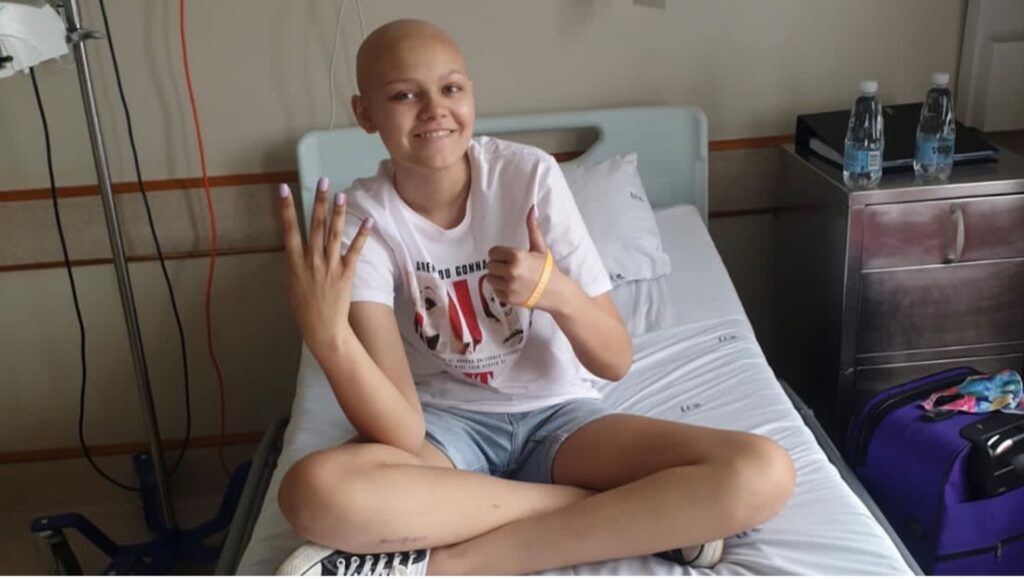“Osteosarcoma treatment is hard, but there will be good memories, too. Write it all down, and someday you can share those memories and inspire others.”
Cheyenne
While the whole world was focused on the COVID-19 pandemic, in South Africa, 14-year-old Cheyenne was being wheeled into surgery not knowing if she’d come out with two legs or one. The teenager had been diagnosed with osteosarcoma in August 2020 and had already had four rounds of chemotherapy. She had lost her hair, put her studies on hold and had to quit two of the things she loved the most — hockey and figure skating.
“It was extremely stressful, because I didn’t know what was going to happen,” Cheyenne says. “I wanted to prepare myself for the worst, but I also didn’t know what my emotions would be to wake up without my leg. It was really tough.”
And yet, Cheyenne persevered through all her treatment — six rounds of chemotherapy and two surgeries in all — and managed to remain positive, not only for herself but for others, making hers an inspiring cancer story. She didn’t even hide the fact that chemotherapy had caused her hair to fall out.
“Someone I met through treatment, I think she was 52, asked how I got motivated to walk around without a wig or a beanie or anything,” Cheyenne says. “But I was proud of my bald head. And later, she told me how inspiring that was and that she went for a walk without anything on her head. It was pretty cool. I’m very proud of that.”

Sharing Her Story
Even after being declared cancer-free in February 2021, Cheyenne has no intentions of putting her experience behind her. She wanted to share personal stories of osteosarcoma.
“I don’t want anyone else to have to go through what I went through,” she says. And so she’s made it her mission to continue speaking out to raise osteosarcoma awareness.
Cheyenne was diagnosed with the disease after noticing her right knee was swollen and red. An x-ray showed a “black hole” in her tibia (shin bone), which her doctor suspected was an infection. But after a bone biopsy, Cheyenne was diagnosed with bone cancer. A few weeks later, she was started on two different chemotherapy drugs.
After her fourth chemotherapy treatment, Cheyenne had an MRI that showed her cancer had grown 5 centimeters down her leg.
“That’s what opened up the option of amputation,” Cheyenne says. “I didn’t know if I would wake up with or without my leg.”
Fortunately, her surgical team was able to perform a limb-salvage procedure, meaning Cheyenne woke up with both legs intact. But it’s taken four additional surgeries and plenty of physical therapy to be able to walk again.
“I started walking again in October 2021,” Cheyenne says. “I’m still struggling with the stairs, but I can walk and do my normal chores, and I’m learning to run again.”
New Interests
Cheyenne’s final chemo treatment was just seven months after being diagnosed with osteosarcoma. Of course, to Cheyenne, it felt like years had passed.
She returned to remote schooling along with the rest of her classmates. But she had to find some new hobbies since hockey and figure skating were now off the table. These days, she fills her time outside of school with video games and being an emotional support to friends she’s made through the osteosarcoma community.
“When I got diagnosed, I was really not in a good place,” she says, adding that there have been some positive aspects, too.
“Cancer led me to finding one of my dearest friends I have today,” Cheyenne says, recounting how she and her friend received their diagnoses at the same time and were in the same hospital. “It was surprising but exciting.”
The experience even inspired her to do some motivational speaking in what she calls “little crowds.”
“I like speaking to my friends and trying to cheer them up,” she says, “or motivate them to keep going because there’s always a rainbow on the other side.”
When asked what others can do to inspire those who come after them, Cheyenne says:
“Document your journey. Osteosarcoma treatment is hard, but there will be good memories, too. Write it all down, and someday you can share those memories and inspire others.”
If you would like to support OSI and people like Cheyenne, please make a donation.
